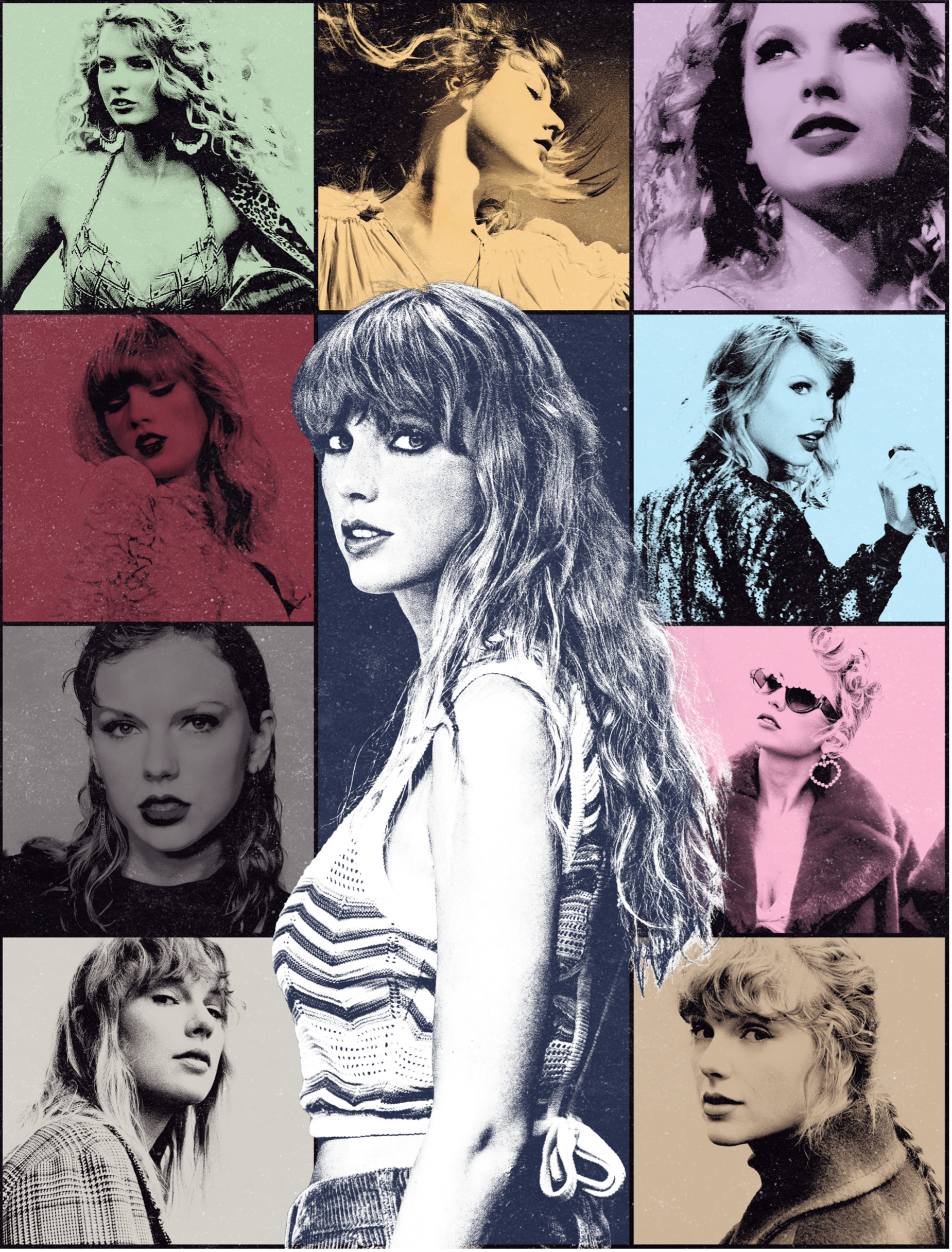
Whether you resonate more with David Bowie’s Ziggy Stardust era than The Thin White Duke, or prefer Taylor Swift’s reputation era over folklore, there’s no denying that artist eras are influential in fan culture and help keep the music industry afloat. If Billie Eilish made the same music album after album with the same green-dyed hair, or if the Beatles stayed in their experimental Sgt. Pepper’s era until they made every possible sound in existence — would fans stick by their side, or grow hungry for a change?
In a broad sense, an era signifies an artist’s creative shift — whether in overall vibe, sound, appearance, persona, storyline or a unique combination of these changes. To understand artist eras in the present day, it makes sense to look at the career of one of the most successful and ever-changing female artists: Taylor Swift. She’s found immense success in centering her career around the concept of eras — whether or not it was intentional.
It’s safe to say that the shifts Swift makes in sound and image with each album — like the bold, dark, revenge vibe of reputation followed by the pink-and-blue romantic aesthetic of Lover — keep her loyal fanbase engaged and constantly anticipating what persona she’ll take on next. But why is this important?
In terms of artist-fan engagement, eras are a smart way for artists to generate buzz and stay relevant in headlines or on social media. If an artist sticks to the same sound and image for too long, it is possible that eventually their career will drift out of the spotlight — especially in a digital age where fans love to share their opinions, come up with theories and dig into themes.
Being “news-worthy” as an artist often equates to traction — whether that means gaining a new wave of fans, streams, or social media engagement. However, switching styles and sounds can also backfire if fans don’t love the route an artist takes. This can bring negative attention to the artist and even cause a noticeable decrease in sales. That’s all part of the experimenting game — you can’t please everyone.
Beyoncé couldn’t cater to everyone’s tastes with her dramatic switch towards the country genre with her Grammy Award-winning album Cowboy Carter. Although Beyoncé has stated that Cowboy Carter wasn’t meant to be defined as a country album, listeners can’t help but notice the country elements that provoked mixed reactions. After the album won Best Country Album at the 2025 Grammy Awards, people took to social media to express their opinions.
A large number argued that Beyoncé shouldn’t have won because it wasn’t an “authentic” take on the genre, while others praised her for exploring a genre where Black women have long been underrepresented. Beyoncé’s Cowboy Carter era created conversation and controversy — providing a good listen for some and a letdown for others.
When talking about artist eras, we have to acknowledge the influential ones who paved the way — David Bowie, Michael Jackson, The Beatles and Madonna just to name a few. Rolling Stone took a trip down memory lane to revisit David Bowie’s iconic eras throughout the years — some better known and celebrated than others. Bowie was known for creating and transforming into different characters, like Ziggy Stardust or Aladdin Sane, and making sonic shifts with each album. Without the traction he built by creating these changes, would Bowie have become the artist he was?
Madonna — one of the most influential pop musicians, also known as the Queen of Pop — has reinvented herself through different exploratory eras, trying out new sounds and switching her image. In the ’80s, Madonna was bold with her stylistic choices and music, taking on this confident, rebellious image, setting fashion trends and creating iconic dance-pop hits like “Material Girl” and “Like a Prayer.”
In the ’90s, Madonna continued to evolve stylistically and musically, releasing her genre-bending pop/electronica album Ray of Light and pushing fashion boundaries by mixing unexpected, yet iconic aesthetics and styles. By creating these ever changing eras in style and sound, she was able to make a name for herself in the music world, remaining relevant all throughout the ’80s and ’90s and building a legacy that will undoubtedly live on forever.
The music industry is a space full of change — where artists experiment with a variety of different sounds, images, characters and themes. With a loyal fanbase, they can expand their creative boundaries, filling their discography and public image with color and variety without worrying too much about losing the community they’ve built. Additionally, fans seem to love when artists shift eras and invite change with open arms. Without artist eras, what would the music industry look like and what would fan-artist relationships become?
Nevertheless, Michael Jackson gained fans through his iconic Thriller release which was notably his most popular era. Without that cultural phenomenon, the King of Pop might’ve never became a staple in the pop world and we might’ve missed out on the impact he made on the music industry and how people view pop today. He also may not have built the loyal fanbase that still exists decades later. Thanks to eras, the music industry is filled with vibrancy and without them, it would be a bland space lacking creativity and exploration.
Keep up with Melodic Magazine: Instagram // Facebook // X // Spotify // YouTube



[…] The impact of an artist’s musical eras […]
[…] The impact of an artist’s musical eras […]